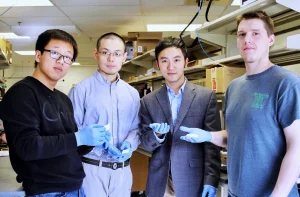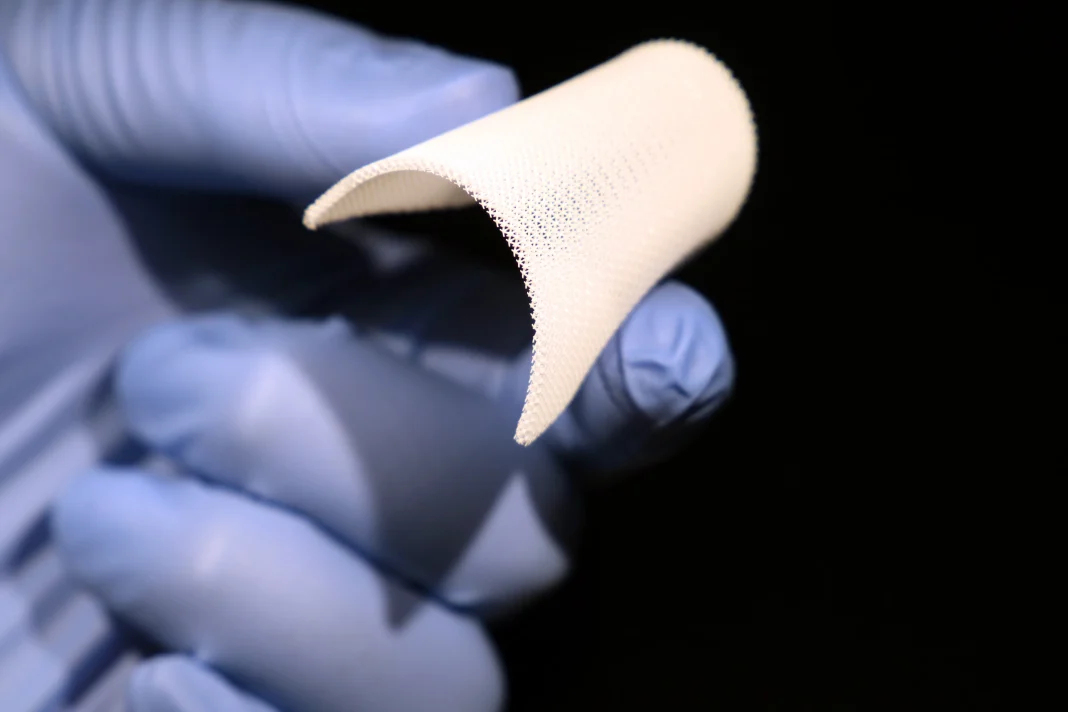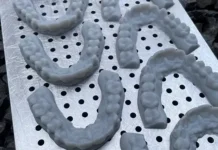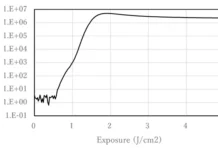
A team from the Virginia Polytechnic Institute and State University College of Engineering has developed methods to 3D-print piezoelectric materials that can be custom-designed to convert movement, impact and stress from any direction into electrical energy.
“Piezoelectric materials convert strain and stress into electric charges,” explained group leader Xiaoyu “Rayne” Zheng, assistant professor of mechanical engineering and member of Virginia Tech’s Macromolecules Innovation Institute, in Blacksburg. “We have developed a design method and printing platform to freely design the sensitivity and operational modes of piezoelectric materials.”
While most piezoelectric materials, which require a clean room for manufacture, are made of brittle ceramics or crystal films or blocks – limiting their shape – Zheng’s team developed a model that permits manipulation of the design. The new 3D-printed materials are not restricted by shape or size and can be activated to provide the next generation of intelligent infrastructures and smart materials for tactile sensing, impact and vibration monitoring, energy harvesting and other applications.
“By programming the 3D active topology,” Zheng continued, “you can achieve pretty much any combination of piezoelectric coefficients within a material and use them as transducers and sensors that are not only flexible and strong, but also respond to pressure, vibrations and impacts via electric signals that tell the location, magnitude and direction of the impacts within any location of these materials.”
A factor in current piezoelectric fabrication is the natural crystal used: The orientation of atoms is fixed. Zheng’s team has produced a substitute that mimics the crystal but allows for the lattice orientation to be altered by design.
“We have synthesized a class of highly sensitive piezoelectric inks that can be sculpted into complex three-dimensional features with ultraviolet light,” Zheng said. “The inks contain highly concentrated piezoelectric nanocrystals bonded with UV-sensitive gels, which form a solution – a milky mixture, like melted crystal – that we print with a high-resolution digital light 3D printer.”
The technology is currently used in everything from cell phones to musical greeting cards. The Virginia Tech team has printed and demonstrated smart materials worn on hands and fingers to convert motion and harvest the mechanical energy, but the applications go well beyond wearables and consumer electronics. Zheng sees the technology as a leap into robotics, energy harvesting, tactile sensing and intelligent infrastructure, where a structure is made entirely with piezoelectric material, sensing impacts, vibrations and motions, and allowing for those to be monitored and located.
The team has printed a small smart bridge to demonstrate its applicability to sensing the locations and magnitude of dropping impacts while absorbing the impact energy. The team also demonstrated the application of a smart transducer that converts underwater vibration signals to electric voltages.
The team demonstrated the 3D-printed materials at a scale measuring fractions of the diameter of a human hair. “We can tailor the architecture to make them more flexible and use them, for instance, as energy-harvesting devices, wrapping them around any arbitrary curvature,” Zheng said. “We can make them thick and light, stiff or energy-absorbing.”
The material has sensitivities five-fold higher than flexible piezoelectric polymers. The stiffness and shape of the material can be tuned and produced as a thin sheet resembling a strip of gauze, or as a stiff block, Zheng explained. “We have a team making them into wearable devices, like rings, insoles and fitting them into a boxing glove, where we will be able to record impact forces and monitor the health of the user.”
“The ability to achieve the desired mechanical, electrical and thermal properties will significantly reduce the time and effort needed to develop practical materials,” said Shashank Priya, associate vice president for research at Pennsylvania State University and former professor of mechanical engineering at Virginia Tech.
The team’s work is supported, in part, by the National Science Foundation, Air Force Office of Scientific Research, the Office of Naval Research and the Virginia Tech Institute of Critical Technology Junior Faculty Award.
Researchers shared their work in a recent article in Nature Materials, which features the following authors from Virginia Tech’s Department of Mechanical Engineering, except as listed: Huachen Cui, Ryan Hensleigh (Virginia Tech Macromolecules Innovation Institute), Desheng Yao, Deepam Maurya, Prashant Kumar, Min Gyu Kang, Shashank Priya (ME and Penn State’s Materials Research Institute) and Zheng.






